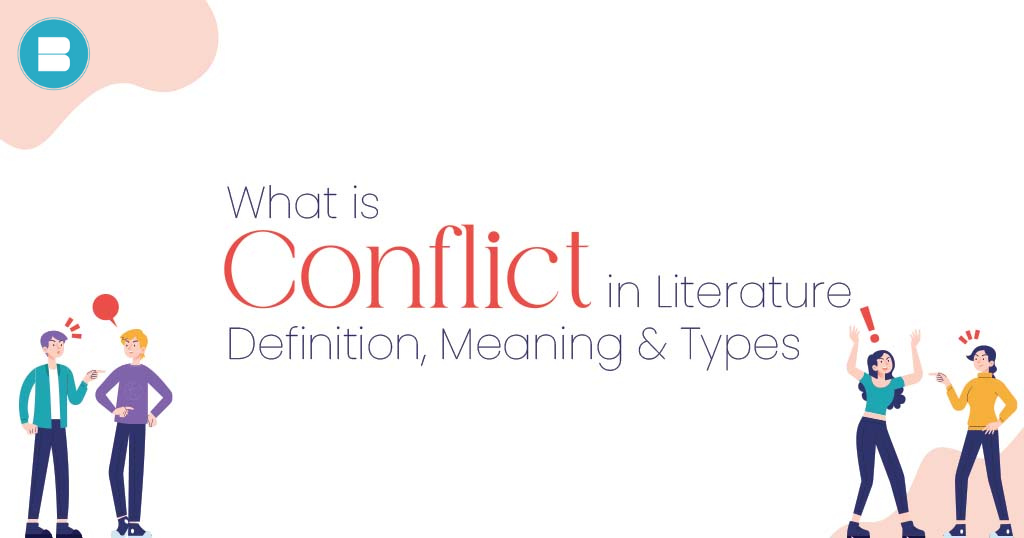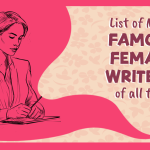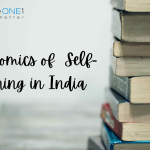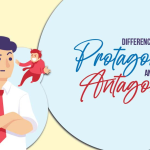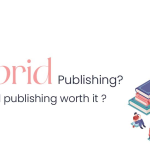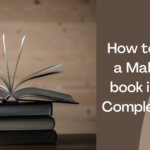Conflict is a fundamental element of literature. It refers to the struggle between two or more opposing forces that drives the plot forward and creates tension and drama in the narrative. Without conflict, a story would be flat and uninteresting, lacking the complexity and depth that make it engaging and memorable.
Read: Here’s a list of top 7 thriller books to read on Kindle Unlimited.
In literature, conflict can take many forms and can arise from a variety of sources. Below, we’ll explore the different types of conflict and what they mean.
Types of Conflict in Literature
- Man vs. Self: Man vs. Self is a type of conflict in which the primary struggle takes place within the mind of the character. This internal conflict can manifest in a variety of ways, including moral dilemmas, identity crises, and battles against personal fears or weaknesses.
Moral dilemmas are a common form of Man vs. Self conflict, in which a character must make a difficult decision that challenges their values or beliefs. For example, a character may be faced with the choice of whether to tell the truth and risk hurting someone they care about, or to lie and protect them. This type of conflict can reveal the character’s moral compass and the principles they hold dear, as well as their ability to reconcile conflicting values.
Identity crises are another form of Man vs. Self conflict, in which a character struggles to understand who they are and where they belong in the world. This can involve questions of gender, sexuality, race, or other aspects of identity that are fundamental to a person’s sense of self. For example, a character may be grappling with the realization that they are gay or transgender, and must come to terms with this aspect of their identity while also navigating the reactions of others. This type of conflict can be particularly poignant and relatable for readers who have experienced similar struggles.
Finally, battles against personal fears or weaknesses can also create Man vs. Self conflict. This may involve a character overcoming a phobia or confronting a traumatic event from their past. For example, a character who is afraid of water may need to learn to swim in order to save someone they care about. This type of conflict can be particularly compelling because it requires the character to summon their inner strength and resilience in order to overcome the obstacles that they face. - Man vs. Man: Man vs. Man conflict is one of the most common types of conflict in literature. It arises when two or more characters have opposing goals, values, beliefs, or desires that are irreconcilable, leading to a clash or struggle between them. This conflict can occur between protagonists and antagonists, or between two or more protagonists. It can also involve a power struggle, competition, or an attempt to thwart the other’s plans.
For example, in William Shakespeare’s play “Romeo and Juliet,” the conflict between the two young lovers and their respective families is a classic example of Man vs. Man conflict. The feud between the Capulet and Montague families leads to the death of several characters, including Romeo and Juliet. The two lovers must navigate the conflict between their families while also dealing with their own personal struggles, such as their forbidden love and the pressures of societal expectations.
Another example of Man vs. Man conflict can be seen in the novel “To Kill a Mockingbird” by Harper Lee. The story follows a young girl named Scout and her family as they navigate the racial tensions and prejudices of a small Southern town. The central conflict arises when Scout’s father, Atticus, defends a black man accused of rape, leading to hostility and backlash from many of the townspeople. Atticus must stand up for what he believes is right, even in the face of opposition and danger.
Man vs. Man conflict can add tension and suspense to a story, as readers are invested in seeing how the characters will overcome their differences and whether or not they will achieve their goals. It can also provide opportunities for character development, as the characters must confront and overcome their flaws and biases in order to resolve the conflict. - Man vs. Nature: In the man vs. nature conflict, the main character or characters face adversity and obstacles presented by the natural world. These obstacles can include natural disasters like floods, hurricanes, or earthquakes, as well as dangerous animals, extreme weather conditions, or harsh environments. The characters may have to fight for survival in the face of these challenges, using their wits, skills, and resources to overcome them.
This type of conflict is often seen in adventure stories, survival tales, and wilderness narratives. It can provide an opportunity for characters to demonstrate their courage, resourcefulness, and resilience, as they must rely on their own abilities to survive in a hostile environment. It can also raise questions about humanity’s relationship with the natural world and the impact that humans have on the environment.
For example, in the novel “The Call of the Wild” by Jack London, the main character Buck, a domesticated dog, is kidnapped and sold into the brutal world of the Alaskan wilderness during the Gold Rush. He must adapt to the harsh conditions and face the danger of wild animals in order to survive. The conflict between Buck and the natural world forces him to tap into his primal instincts and learn to live as a wild animal, ultimately leading to his transformation and growth as a character.
In the movie “The Revenant”, the main character Hugh Glass, a frontiersman and fur trapper in the early 1800s, is left for dead by his fellow trappers after being mauled by a bear. He must survive alone in the harsh winter wilderness and face danger from both the natural world and hostile Native American tribes. The conflict between Glass and the natural world tests his limits and forces him to rely on his skills and determination to survive.
In both examples, the man vs. nature conflict highlights the power and unpredictability of the natural world, and the resilience and adaptability of the human spirit in the face of adversity. - Man vs. Society: Man vs. Society conflict is when a character’s beliefs, values, or actions come into conflict with those of the larger society or community. This conflict can arise from differences in class, race, gender, culture, or political ideology.
In this type of conflict, the character may face oppression, discrimination, or social injustice. They may feel isolated or ostracized from the rest of society, or they may be actively working to challenge and change the status quo. This can create a sense of tension and drama in the narrative, as the character struggles to navigate their relationship with society and determine their place in the world.
An example is the dystopian novel “1984” by George Orwell, where the protagonist, Winston Smith, faces a Man vs. Society conflict as he rebels against the totalitarian government of Oceania. In a society where independent thought and free will are suppressed, Winston risks everything to challenge the oppressive regime and find a way to live a life of autonomy and freedom.
In both examples, the conflict arises from a clash between the character’s values and beliefs and those of the society in which they live. This type of conflict can create tension, suspense, and drama in a narrative and can serve as a means of exploring deeper themes and issues related to society, politics, and culture. - Man vs. Supernatural: Man vs. Supernatural is a type of conflict in which a character faces supernatural or paranormal entities or events that challenge their beliefs and understanding of the world. This type of conflict is commonly found in horror or fantasy genres, where supernatural elements are often present.
In this type of conflict, the character may face challenges from ghosts, vampires, zombies, or other supernatural beings, and they may struggle to survive or overcome these entities. The supernatural elements may also be used to create a sense of mystery, suspense, or terror, as the character tries to understand and navigate their supernatural experiences.
For example, in Bram Stoker’s classic novel “Dracula,” the main character, Jonathan Harker, faces a supernatural conflict as he discovers that his host, Count Dracula, is a vampire. As the story progresses, Harker must fight for his life against the vampire and try to uncover the truth about Dracula’s powers and intentions.
Similarly, in Stephen King’s novel “The Shining,” the main character, Jack Torrance, faces a supernatural conflict as he and his family stay at the isolated Overlook Hotel, where paranormal activity begins to take place. Jack’s sanity is challenged as he faces the hotel’s dark history and the malevolent spirits that haunt it.
In both of these examples, the supernatural conflict creates tension and suspense, forcing the characters to confront their beliefs and fears while also driving the plot forward. The supernatural elements add an extra layer of complexity and intrigue to the story, making it more engaging and memorable for readers. - Man vs. Technology: Man vs. Technology is a type of conflict that is becoming increasingly relevant in modern literature. It involves a character’s struggle against the negative effects of technology, including the potential loss of control over technology, the replacement of humans by machines, and the impact of technology on society and the environment.This type of conflict often explores the tension between the benefits and drawbacks of technology. On one hand, technology can offer numerous benefits, such as improved efficiency, communication, and quality of life. On the other hand, it can also lead to negative consequences, such as job loss, environmental degradation, and social isolation.
In literature, Man vs. Technology can take many forms. For example, it can involve a character who is struggling to adapt to a new technology, such as a robot assistant or a virtual reality system. It can also involve a character who is fighting against the negative effects of technology, such as a hacker who is trying to prevent a dangerous computer virus from spreading.
Man vs. Technology can also explore the ethical implications of technology, including issues such as privacy, security, and the potential for technological advancements to lead to a loss of humanity. This type of conflict can also raise questions about the role of technology in society and the responsibility of those who create and control it.
What Does Conflict Mean in Literature?
Conflict is an indispensable aspect of literature that is essential to creating compelling stories. Whether it is a novel, a play, or a short story, conflict drives the plot forward, creates tension, and engages readers in the story. At its core, conflict refers to any obstacle or challenge that characters face in pursuit of their goals or desires. It can manifest in many forms, including physical, emotional, moral, and intellectual conflicts.
One of the primary functions of Conflict is to create tension and drama in the narrative. When characters are faced with obstacles, they must make choices and face consequences that drive the plot forward. For example, in J.R.R. Tolkien’s “The Lord of the Rings,” the conflict is between the protagonist Frodo Baggins and the dark lord Sauron. The goal is to destroy the One Ring that Sauron needs to conquer Middle-earth. The conflict creates suspense, as the reader wonders whether Frodo will be able to overcome the seemingly insurmountable obstacles in his path.
Another important function of conflict is to explore deeper themes and issues. Conflict can be a means of examining complex moral and ethical dilemmas, such as the struggle between good and evil or the nature of justice. For instance, in Harper Lee’s “To Kill a Mockingbird,” the conflict arises when the lawyer Atticus Finch defends a black man accused of raping a white woman.
The case reveals the deep-seated racism and prejudice that existed in the American South during the 1930s and raises important questions about the fairness and impartiality of the justice system.
Read: What is Amazon Kindle Publishing? A to Z Kindle Direct Publishing.
Conflict can also add depth and complexity to characters, revealing their strengths, weaknesses, and motivations. When characters face obstacles, they are forced to confront their flaws and shortcomings and find ways to overcome them. This can lead to character growth and transformation, as they learn valuable lessons and develop new insights into themselves and the world around them.
For example, in Charles Dickens’ “A Christmas Carol,” the protagonist Ebenezer Scrooge is confronted with the ghosts of his past, present, and future, who force him to confront his greed and selfishness. Through this conflict, Scrooge learns the importance of compassion and generosity and is transformed into a kind and caring person.
There are several types of conflict that can arise in literature, each with its own unique characteristics and implications. One common type of conflict is external conflict, which refers to a struggle between a character and an external force, such as another character, nature, or society. For example, in William Golding’s “Lord of the Flies,” a group of boys stranded on a deserted island must contend with the dangers of the wilderness and the power struggles that emerge within their group.
Another type of conflict is internal conflict, which refers to a struggle within a character’s own mind or heart. This can take many forms, such as a moral dilemma, a crisis of faith, or a struggle with addiction. For instance, in Fyodor Dostoevsky’s “Crime and Punishment,” the protagonist Raskolnikov is torn between his desire to commit murder and his conscience, which tells him it is wrong.
In conclusion, Conflict is an essential component of literature, providing a means of creating tension, driving the plot forward, exploring deeper themes and issues, and revealing the complexity and depth of characters. Whether it takes the form of an internal struggle, a clash between characters, or a battle against the forces of nature or society, conflict is a fundamental element that adds richness and depth to the literary experience.
Publish your book for free with BlueRoseONE and become a bestselling author. Don’t let your dream of becoming an author fade away, grab the opportunity now and publish your book – be it fiction, non fiction, poetry or more.

